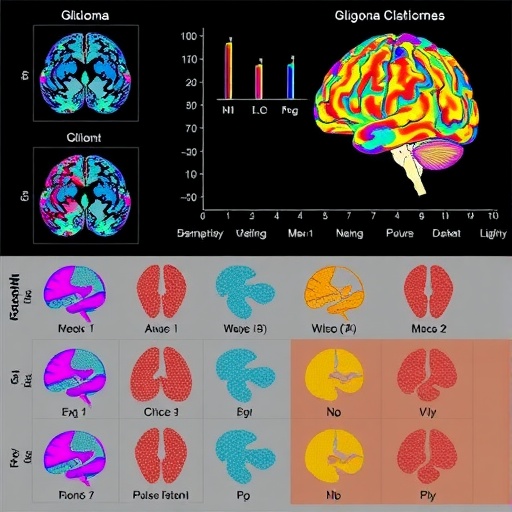In a groundbreaking study addressing the complexities of neonatal care, researchers have delved deep into the feeding outcomes of preterm infants discharged with feeding tubes (FT), shedding critical light on a facet of infant health often overshadowed by broader neonatal concerns. Premature birth, a global health challenge, frequently necessitates interventions that support fragile infants in their initial days outside the womb, with tube feeding emerging as a pivotal method to ensure adequate nutrition. However, little has been comprehensively understood regarding how these early feeding modalities influence long-term feeding success and overall developmental trajectories. This latest investigation, published in the Journal of Perinatology, brings forth a nuanced evaluation of feeding outcomes, offering insights that may reshape post-discharge care protocols.
The study’s impetus stems from the growing recognition that feeding difficulties remain a significant barrier to discharge readiness and predictor of post-neonatal morbidity. While feeding tubes are lifesaving, their use mandates meticulous monitoring due to risks ranging from feeding aversion to prolonged dependence that can complicate neurodevelopment. Researchers led by Lakhani et al. leveraged a robust cohort of preterm infants, meticulously tracking feeding progress from the point of discharge through critical landmarks in early infancy. Their approach incorporated an interdisciplinary lens, blending neonatology, nutrition science, and developmental pediatrics, which allowed for a comprehensive understanding of feeding trajectories.
Their methodology employed longitudinal data analysis, incorporating variables such as gestational age at birth, duration of feeding tube dependence, comorbidities, and family support systems. Notably, they distinguished between nasogastric and gastrostomy tube feeding, elucidating differential impacts on feeding outcomes. The inclusion of detailed demographic and clinical data facilitated nuanced subgroup analyses, revealing that the timing of weaning from tube feeding correlated strongly with both neurodevelopmental milestones and growth parameters. These findings underscore the intricate interplay between physiological readiness and environmental factors in feeding success.
Feeding outcomes were categorized primarily by timelines of achieving full oral feeding, incidence of feeding-related complications, and rates of hospital readmission linked to feeding difficulties. The data converged on a pivotal revelation: preterm infants discharged with feeding tubes, when supported with structured follow-up and targeted feeding interventions, demonstrated promising trajectories toward full oral feeding within the first year of life. However, the heterogeneity in outcomes pointed to the significance of individualized care pathways, highlighting that a one-size-fits-all approach is insufficient in managing this vulnerable population.
Further, Lakhani et al. investigated the role of multidisciplinary feeding teams, encompassing speech therapists, dietitians, and nurses, in optimizing outcomes. Their analysis revealed that infants enrolled in such programs exhibited fewer complications and accelerated progression to oral feeds. This synergy between clinical intervention and caregiver education emerged as a decisive factor in transforming the feeding experience from a mechanical necessity to a developmental opportunity. The study’s results advocate for the incorporation of structured feeding support programs as standard care, potentially influencing hospital discharge policies worldwide.
Technical analysis within the study also illuminated the physiological underpinnings contributing to feeding readiness and success. The authors articulated the critical role of oromotor development, gastrointestinal motility, and neuro-respiratory coordination, all of which are often immature in preterm infants. By correlating clinical assessments of these physiological domains with feeding outcomes, the research offers a framework for predictive modeling. These predictive tools could empower clinicians to tailor feeding strategies more effectively, minimizing the duration of invasive tube feeding and enhancing infant comfort.
Importantly, the study addresses the psychosocial dimensions of feeding newborns with tubes, an area frequently neglected in clinical research. Parental stress, anxiety, and confidence in managing feeding at home were assessed through validated scales, revealing significant associations with feeding success. This finding emphasizes the need for comprehensive discharge planning that encompasses not only medical but also emotional support for families. By integrating psychosocial evaluations into neonatal care pathways, healthcare providers may bolster familial resilience and improve longitudinal outcomes.
One of the more innovative aspects of the research was its utilization of modern data visualization and machine learning techniques to analyze feeding progression patterns. These computational approaches enabled the identification of subtle trends and risk factors otherwise obscured in conventional statistical analyses. For example, the researchers could stratify infants into risk categories predictive of delayed oral feeding, facilitating earlier intervention. The advent of such analytical tools marks a new era in neonatal care, where personalized medicine is informed by sophisticated data-driven insights.
The ramifications of this study extend beyond clinical practice to policy-making and healthcare economics. Prolonged dependence on feeding tubes is associated with increased healthcare utilization and costs. By elucidating pathways to expedite safe transition to oral feeding, the study provides an evidence-based rationale for investing in multidisciplinary feeding programs and parental support initiatives. Such investments may translate into reduced hospital readmissions, decreased healthcare expenditures, and improved quality of life for infants and families alike.
In synthesizing their findings, the authors caution against oversimplification and urge continued research to refine feeding protocols further. The heterogeneity of preterm infants’ health statuses, compounded by varying social determinants of health, demands nuanced approaches that can adapt to diverse clinical settings. They advocate for multicenter collaborations and randomized controlled trials to validate and expand upon their observations, with an eye towards establishing universally accepted feeding guidelines for preterm infants discharged with feeding tubes.
Moreover, the study highlights the importance of early identification and intervention for infants showing signs of feeding dysfunction. Screening tools that incorporate physiological, developmental, and psychosocial parameters could become integral in neonatal intensive care units (NICUs). Such preemptive measures could reduce the duration and necessity of feeding tube dependence, mitigating potential complications such as aspiration pneumonia or oral aversion syndromes.
The investigation also touched on technological advancements in feeding tube design and their implications for infant comfort and feeding efficacy. The evolution of smaller, more flexible, and sensor-embedded tubes may soon revolutionize feeding management, reducing invasive trauma and fostering neurodevelopmentally supportive feeding experiences. These innovations, coupled with the clinical insights gained from studies like this, promise to reshape future standards of care.
In the broader context of neonatal nutrition, this research contributes critical evidence underscoring that successful feeding transcends mere calorie delivery. It is intimately linked to neurodevelopmental integrity, caregiver-infant bonding, and holistic growth. By illuminating the pathways to optimize feeding outcomes, the study paves the way for more equitable and effective care, particularly for the most vulnerable infants.
As neonatal survival rates continue to improve globally, attention is increasingly shifting toward quality of life and functional outcomes. Feeding competence is central to these goals, influencing not only physical growth but also long-term cognitive and behavioral trajectories. Lakhani and colleagues’ work represents a seminal step towards understanding and improving these crucial neonatal outcomes.
The findings also underscore the imperative for healthcare systems to integrate continuous education for both clinicians and families managing feeding tubes post-discharge. Empowered caregivers with adequate training and resources may significantly impact adherence to feeding regimens and timely recognition of complications, thereby enhancing infant safety and feeding success.
Finally, this comprehensive study stimulates a broader discourse on how multidisciplinary, technology-enabled, and family-centered approaches can transform neonatal care paradigms. It invites researchers, clinicians, and policymakers alike to prioritize feeding outcomes within the neonatal agenda, fostering innovations and interventions that resonate across clinical, social, and technological domains.
Subject of Research:
Feeding outcomes of preterm infants discharged with feeding tubes.
Article Title:
Feeding outcomes of preterm infants discharged with feeding tubes.
Article References:
Lakhani, A., McElhanon, B., He, Z. et al. Feeding outcomes of preterm infants discharged with feeding tubes. J Perinatol (2025). https://doi.org/10.1038/s41372-025-02422-x
Image Credits:
AI Generated
DOI:
https://doi.org/10.1038/s41372-025-02422-x




